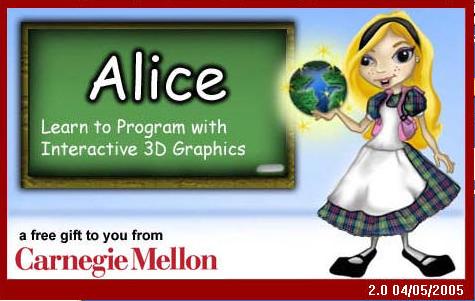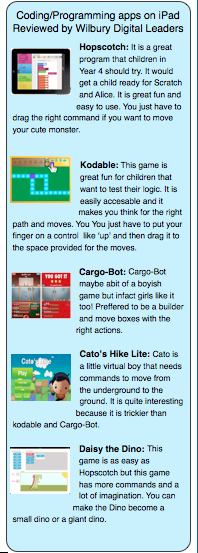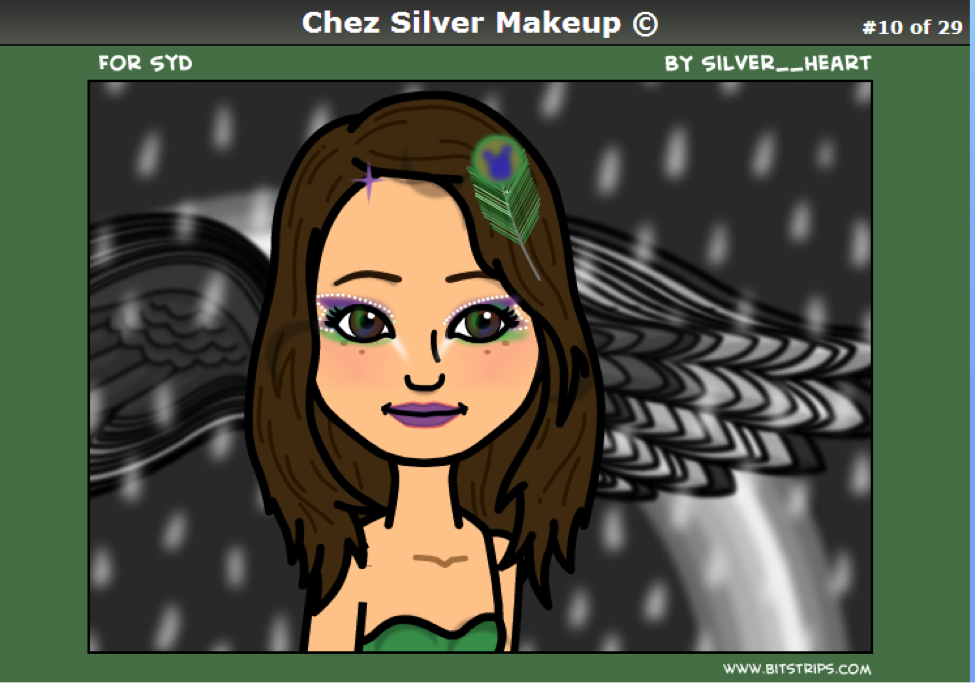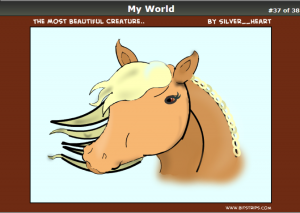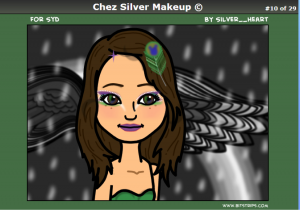by Dr. Maryanne Maisano & Dr. Deborah Anne Banker
ABSTRACT
This paper focuses on the specific use of Second Life within the instructional design of a teacher education course in the aftermath of a hurricane super storm, which devastated this US metropolitan area. Second Life, an immersive learning software program of a Virtual World that allows selfdirected learners to actively communicate not only with professors and peers within the course room but with people from different places and different cultures, with the assistance of simultaneous translation services. Teachers, with their students, can create scenarios in endless venues, focusing on concepts of culturally responsive teaching, while “meeting” educators, colleagues, and students from other cultures and countries for discussions, ideas, developing thinking skills, and participating in simulated field experiences thus providing a venue for continuous professional development under many circumstance.
Keywords: technological simulation, global perspectives, continuous professional
Introduction
Traditionally, lectured instruction has taken place in many a college course room, with the professor as the expositor of information toward students within the hallowed halls of academia. The twenty-first century learner has rapidly become testimony to multiple teaching and learning approaches with the use of technology in a constantly changing technologically immersed global society. One specific approach noteworthy of documentation will be extensively discussed in this paper as the alternative virtual learning environment introduced to students of St. Francis College in Brooklyn, NY, USA by one professor as a means to meet the technology standards of course instruction. This professor chose a virtual classroom environment to meet synchronously within the realm of Second Life as part of a hybrid methods course of the college in the immersive world environment created by a former colleague already established in Second Life (SL). “Second Life” poised not to replace the current physical classroom but to enrich an already strong teacher education program beginning with a Virtual World called Second Life (SL), available via the Internet.
Methodology
The specific design of this paper will illustrate a qualitative study using the methodology of focus group and narrative questionnaire analysis of student generated d i s c u s s i o n a n d w r i t t e n documentat ion of cont inuous course of study during the aftermath of the storm. The findings and results will herald the voice of students in the education program at this specific institution of higher l e a r n i n g – b a s e d s i m u l a t e d environment. Players create and take the form of avatars which are visible, that can interact with each other and use and create objects. Communication between players include text, graphical icons, visual gestures, and sounds. Some communication may also include using touch, voice command, and balance senses, depending on the version and technology being used by the players. Because of the interplay of senses being provided, players experience the sensations of telepresence or the feeling of actually being present within the imaginary, fantasy world.
A TECHNOLOGICAL PERSPECTIVE FOR COLLEGE STUDENTS IN A TEACHER PREPARATION PROGRAM
With SL, already a virtual reality designed specifically by one of the authors of this paper for the use of teaching and learning in an immersive world technology, the authors of this paper will present the current possibilities and a d v a n t a g e s o f c o n n e c t i n g traditional classroom instruction for students in a teacher education program with the expansive oppor tuni t ies for c las s room inst ruct ion provided by thi s technology format, which is part of the system known as immersive learning. What began as simply an alternative method of instruction based on the technology standards for the course ultimately found this method of instruction to be a beacon in the storm in the 5 aftermath of the super storm Hurricane Sandy that unleashed its wrath of destruction in the NY metropolitan area on October 29, 2012. To date, there is still much devastation in the process of rebuilding and although much of the teaching and learning has returned to normalcy in many courses of study, the use of the tool of technology for synchronous meeting continues to maintain excellence in the world of teaching and learning in higher education.
Currently, the Second Life Viewer refers to itself as a free client program that enables its users, called Residents, to interact with each other through Avatars. Residents can explore, meet other Residents, socialize, participate in individual and group activities, and create and trade virtual property and services with one another, or travel throughout the world, which Residents refer to as the “grid”. SL is designed for users aged over eighteen. Built into the software is a three dimensional modelling tool based around simple geometric shapes that allows a resident to build virtual objects. This tool can be used in combination with a scripting language called Linden Scripting Language for adding movement and function to objects and can be combined with three-dimensional sculpted forms for adding textures for clothing or other objects, animations, and gestures. (Taken February 16, 2009, Second Life, Wikipedia, And The Free Encyclopedia). Once again, it is important to mention that at no cost to students in this immersive world of SL, students were graciously invited to the virtual world created by the co-author and professor from another US University, for synchronous instruction for educators. This virtual environment is shared by educators world wide for continuous professional development available to anyone interested in not only exploring the immersive world technology in education but to build on content area learning in multiple disciplines.
Second Life in Higher Education
While teaching methods courses at St. Francis College in Brooklyn NY, one of the authors of this paper in collaboration with her co-author initiated a Second Life component to the Education Department’s course of study for pre-service teachers in the undergraduate program in teacher education. While adhering to the in-place curriculum and conceptual framework for this course, she explored the possibilities of using SL with her students. As this component was developed, many significant principles of learning (Vygotsky, 1978, Gardner, 1983, Marzano, Pickering, Pollock, 2001, Strong, Silver, Perini, 2001) became available to all the participants, principles that were previously introduced by the professor in face-to-face instruction and the participants were now able to receive the same body of knowledge in a virtual classroom synchronous meeting. The following extensions available through SL represent only the first steps in the merging of this SL technology with teacher preparation:
First. Virtual Classroom Development which can be modified continuously, as required, for specific subject area learning and attention to individualized needs.
Second. Subject-Area Availability and Integration through access to the Internet and human resources.
Third. Practice Teaching Simulations and Role-Playing allowing every pre-service student to participate and interact with colleagues.
Fourth. Distance Learning Opportunities for Developing Culturally Responsive Teaching with “distance” being global and communication made possible through immediate translations (ex. Italian to English and English to Italian, etc.)
Fifth. Simulated “Field” Experiences that take students to “courthouses, hospitals, environmental sites, geographic regions” or wherever else one can actually and, therefore virtually, reach.
We will explore how each of the above aspects of this pre-service course was expanded through SL. Combined with these aspects of learning is the research that attests to their value for both classroom teachers and students and can be provided more effectively and efficiently by access to SL. This preparation is essential for developing quality teachers imparting a high-level curriculum who can particularly address the needs of students of diversity who may have previously been “under served” (Rothstein, M. and E. Rothstein, 2009). Further, it is important to reiterate the knowledge we impart in a traditional setting of course instruction is mirrored in the virtual e n v i r o nme n t b o t h s y n c h r o n o u s l y a n d asynchronously—a clearly defined asset set in place for specific use in spite of the aftermath of a devastating storm which left many students unable to travel to campus for regular instruction.
SL allows the teacher, as well as the students, to continuously “modify the classroom.” The Second Life scenario, students can set up vir tual environments of cities, countrysides, museums, wildlife settings or whatever is related to the curriculum just as the co-author of this paper has done for the purpose of coming together synchronously in a virtual presence. By creating these simulated settings, teachers and students are involved in active research from the Internet and other media, which they can then present, to colleagues or classmates for true sharing and discussion. Through this simulation, the teacher guides the students in a true cross-cultural model for individualization of instruction (Maisano, 2004).
Subject Area Learning and Attention to Individualized Needs Through Virtual Instruction Time
“Planet earth is inhabited by all kinds of people who have all kinds of minds. The brain of each human is unique. Some minds are wired to create symphonies and sonnets, while others are fitted out to build bridges, highways, and computers… (Levine, 2002.1)”
This opening statement in ‘A Mind at a Time’, rarely serves as the basis for subject area instruction in a traditional setting. Marzano, Pickering, and Pollock (2001) express a complementary viewpoint on instruction by challenging the concept of what “all students” need (rather than what the individual student needs) by asking if there are instructional strategies that are 1) more effective in certain subject areas 2) more effective at certain levels of instruction 3) more effective with students from different backgrounds, and 4) more effective with students of different aptitudes (9). In response to these questions, the authors state three strategies that have been shown to have positive effects, known as student-centred instruction, teaching of critical thinking skills, and the use of hands-on activities. Preservice teachers are taught to model these strategies in their course of study. This is implemented on several levels in the hybrid class, which embodies both face-to-face instruction and immersive world instruction in the virtual environment of Second Life.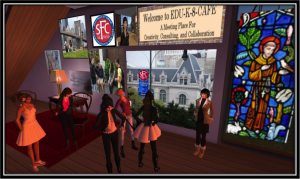
While administrators and teachers may agree with the concepts of Levine and Marzano, they may ask, justifiably, how they could possibly create instructional formats that are “individualized” and “student-centred” when all the students know the same information, which they must all learn at the same rate. A modestly stated answer to this question might lie in the inclusion of Second Life in the classroom which can be introduced and maintained by the current population of pre-service and inservice teachers who enter the classroom with SL knowledge and skills which this paper addresses.
Subject-Area Availability and Integration
As pre-service teachers prepare, practice and model quality instruction they keep in mind the following iterated by E.D. Hirsch’s second chapter in The Schools We Need is titled “Intellectual Capital: A Civil Right”. Hirsch opens with the statement that “The need in a democracy is to teach children a shared body of knowledge”(17), which he calls intellectual capital. “operates in almost every sphere of modern society to determine social class, success or failure in school, and even psychological or physical health” (19). Hirsch continues to explain the concept of Intellectual Capital as a necessity for economic and psychological well being, focusing on those children denied access to this “capital.” He empathetically writes, [these children] “fall further and further behind. He then compares this lack of intellectual capitalism with money stating that a “child’s accumulation of wide-ranging foundational k n o w l e d g e i s t h e k e y t o e d u c a t i o n a l achievement” (20).
The inclusion of SL in the teaching/learning spectrum and in the preparation of pre-service teachers can be a powerful adjunct in the development of intellectual capitalism because not only does it have the advantage of being a virtual modifiable classroom, but because it offers access to specific subject-area topics that, again following through on Hirsch, “can be broadly shared with others” for effective communication and learning (20). Through SL, preservice teachers and students of all ages can “go to” sites on beginning reading, mathematics, chemistry, or whatever curriculum area is needed. A further advantage of this access is the opportunity to truly integrate subjects. At an SL site, students at their desktop through their “Avatars” with different aspects of knowledge can meet to present and discuss, for example, “the relationship of mathematics to chemistry, “ or “the history of the English language and its affect on English spelling.”
Visitors to the site can bring their high-level intellectual questions and find other visitors and materials with answers. The learning is not linear and based on a pacing guide, but circular and expansive, and dependent on shared knowledge. This specific goal is maintained through the networking of educators worldwide. Pre-service teachers at St. Francis College, Department of Education had the unique opportunity to p r e s e n t a n d participate in an international o n l i n e c o n f e r e n c e m e e t i n g t e a c h e r s a r o u n d t h e w o r l d t o d i s c u s s pedagogy t o practice. This practice alone is one aspect of using this s p e c i fi c technology tool to enrich the learning experience for all students on multiple levels of cognition.
Practice Teaching Simulations and Role-Playing
SL gives every participant student multiple opportunities to participate and interact with colleagues. In the History of Education in America, published in 1994, the authors Pulliam and Van Patten wrote of the “Character ist ics of Futur ist i c Education” (270-281), much of which they have said is not only relevant, but still needs to occur. They begin with the axiom that “Education is more than training”. Training refers to providing students with existing information. The true purpose of education, they state, “requires an environment in which students are not asked questions for which the answers are known”, but which develop the “ability to solve problems and communicate in a meaningful way” (272). The classroom, as we know it, is a limited setting for pre-service teachers to practice teaching simulations and to role-play not only the teacher, but also the learners. The teacher who lectures can only hope that the “wisdom and knowledge” emanating from the lecture reaches and interacts with the brain of the learner.
Two publications extend the earlier work of Pulliam and Van Patten: Howard Gardner’s Five Minds for the Future (2007) and Daniel Pink’s A Whole New Mind (2005). Gardner’s “five minds” represent what he terms “five dramatis personae” that allow a person to be “well-equipped to deal with what is expected, as well as what cannot be anticipated” (2). The five minds, according to Gardner, are the disciplined mind, the synthesizing mind, the creating mind, the respectful mind, and the ethical mind. Gardner’s specific use of the terms dramatis personae tie-in not coincidentally with the need for “role p l a y i n g ” i n t e a c h e r p r e p a r a t i o n . Daniel Pink (2005) also focuses on the mind, referring t o a r t i s t s , i n v e n t o r s , d e s i g n e r s , s t o r y t e l l e r s , c a r e g i v e r s , consolers, big picture thinkers—those with minds needed for the forthcoming decades. Needed for a successful future will be those people who exhibit the qualities of inventiveness, empathy, joyfulness, and meaning. If we can imagine future teachers having minds that merge the qualities of Gardner and Pink, we can imagine teaching and learning environments well beyond the current classrooms we now have. To begin this process, teachers of the future need to begin their training by simulating and role-playing of what is likely to be.
The addition of SL to pre-service teacher preparation is designed by its structure to foster and promote continuous interactions and role-playing, based on solving problems that confront learners and learning, st retching thei r minds to be discipl ined, synthesizing, creating, respectful, and ethical. Every participant in a SL setting must interact cooperatively, (not competitively) a behavior, which the authors emphasize, is predictive of not only success in school, but also success on the job and in life (Pulliam and Van Patten 274). Also, interacting cooperatively encompasses the qualities cited by Pink. In an SL setting, pre-service teachers can be involved in all or most of these simulations and roleplaying activities (Maisano, 2010).
Distance Learning Opportunities for Building Culturally Responsive Teaching & Continuous Professional Development

During the aftermath of the storm, lives were shaken, saddened by the destruction and devastated by the paralysis of life perhaps once taken for granted. Transportation of any kind was nonexistent as railways and roads were riddled with debris and flooded tunnels. It is during this time that this alternative method of instruction had an impact on students to help them stay connected with one another, their classmates and professor as well as staying connected with their learning community. This model of culturally responsive teaching and learning was poignantly clear and appropriate to distance learning opportunities for building culturally responsive teaching. Aspects of teaching and learning are visibly simulated in SL, with “distance” being global and communication made possible through immediate translations. With the immersive world-learning tool of Second Life (SL), pre-service and in-service teachers communicate directly with a variety of educators from other countries and cultures with opportunities to become culturally responsive teachers.
Gay (2000) defines culturally responsive teaching as using the cultural knowledge, prior experiences, and performance styles of diverse students to make learning more appropriate and effective for them; it teaches to and through the strengths of these students. Similarly, Ladson-Billings (1994) studied actual instruction in elementary classrooms and observed these values being demonstrated. She saw that when students were part of a more collective effort designed to encourage academic and cultural excellence, expectations were clearly expressed, skills taught, and interpersonal relations were exhibited. Students behaved like members of an extended family assisting, supporting, and encouraging each other. Students were held accountable, as part of a larger group, and it was everyone’s task to make certain that each individual member of the group was successful. As the potential of SL develops, pre-service and in-service teachers have direct experiences in communicating with peers from different cultures and backgrounds. Imagine a group of pre-service teachers from St. Francis College exchanging methods, concepts, and ideas with teachers from Yarrawonga, Australia, using the technology of Second Life to exchange materials and artifacts, share problems and solutions, and maintain ongoing dialogues.
Simulated “Field” Experiences
Second Life (SL) can take students wherever one can virtually reach. In A Whole New Mind (2005), Pink outlines six “high-concept, high-touch senses that can develop the whole new mind” that students will need. He names these “senses” design, story, symphony, empathy, and play (5,6). While all of these senses can be elevated or raised through participation in SL, “play” can have a special place and a special value in the SL experience. Pink cites the definition of play by Brian Sutton-Smith as “to act out and be willful, exultant and committed as if one is assured of one’s prospect’ (187).
One of the pleasant school activities for most students at any age is a field trip. A field trip is not only seeing and being part of a place outside the classroom, but means freedom to walk around, possibly touch plants or animals or unique objects, talking to classmates without disapproval, and learning “outside the box” (Maisano, 2010). Yet field trips are generally infrequent for many reasons. Adding the SL “field trips” to a one’s course of study, can be a high-level substitute that expands horizons and offers visualizations beyond those that can be provided in textbooks and other written materials.
Pre–Service teachers at St. Francis College (SFC) in this particular genre of learning had the opportunity to meet and greet educators from many international locations while presenting at a Social Studies International Conference with Virtual Pioneers (http://virtualpioneers.weebly.com/). Enhanced by a scenario of role-playing set in an historic period in new geographic locations populated by “characters” of a different era and maybe speaking a different language that is now simultaneously translated on the computer screen.
Findings & Results of Focus Group Student Led Discussion and Narrative Anonymous Exit Questionnaire Taken of Pre-Service Teachers at SFC and Their Use of Second Life in the Aftermath of the Storm
The focus group discussion and questionnaire comments were in response to the following discussion points.
Did the course meet your expectations?
What were the highlights/strong points of the course experience?
Do you feel the course prepared you for your future teaching experience?
Given the circumstances surrounding the aftermath of the storm during this semester, did you think the alternative method of instruction and use of technology helped to maintain the standards and requirements of the course?
Is there anything you would have changed or done differently in this course or requirements?
The findings will be documented as positive and negative responses to the aforementioned questions, which resulted in 85% positive responses and 15% negative responses. For the purposes of this paper, we have presented the questions and a sampling of the responses to each question divided in positive statements and negative statements.
POSITIVE
I feel that the use of technology during the hurricane was a brilliant idea. It was a wonderful accommodation for the students.
The use of SL during the aftermath of Hurricane Sandy not only made learning convenient but also broadened our understanding of methods of teaching Science.
A highlight of this course would have to be using Second Life.
I strongly believe that although Hurricane Sandy was a tragedy, it was a great example to show us that these things happen, and we must continue with life as we are given. I was able to find a location with WIFI and didnʼt have to worry about attending class on campus. There was no way of getting to SFC because of transportation issues.
I feel that given the aftermath of the storm our professor was prepared to continue class on second life. I thought that was great because everyone would still be together, we could hear each other and there was a certain comfort in being together and helping each other in the middle of so much confusion and destruction. I would have felt lost coming back to class 3 weeks later if it were not for our meeting in SL.
We canʼt help natural disasters so I think the use of technology (Second Life) really helped all of us to stay in touch and be on target with our studies and connected to our classmates.
I find it interesting how you can put up lessons and see the same things we would see in our face-to-face class even in a virtual learning classroom.
Second Life was a bit challenging at first however, seeing how convenient it became in the aftermath of the storm I was drawn to it because it brought us all together when we couldnʼt be together in real life! I wish all my courses had the option of using SL.
Because of Hurricane Sandy, we were not able to attend our class on campus at SFC. Second Life acted as a meeting place online. This was not the same as using ANGEL (Blackboard) because it was not like other online courses Iʼve heard about. We actually met and learned together virtually. This helped our class stay on track and up to date with assignments and lessons. SL was a great experience.
I learned not only how to teach science and social studies, but how to incorporate technology in our teaching.
I was amazed at how much I could use SL. I learned quickly actually and was lucky enough to present at the Virtual Pioneers Conference in SL and got to meet teachers from many different places around the world.
The technology allowed me to experiment, experience and gain knowledge on what I can push myself to do and ways to better serve my future students.
This technology alternative allowed me to study social studies education in ways I didnʼt know were possible. I felt that the strong points for me in this course were being able to express my creativity in a variety of projects instead of only writing papers and taking tests.
I learned so much in this class. Many activities and techniques that I could incorporate in my future teaching were the highlight of this class. It was amazing how many projects we could do in SL.
I think the use of technology helped me maintain the standard for this course because we were doing the same thing we would usually do on campus in the virtual classroom.
I think Second Life was a great asset to this course in particular. It was convenient and it made presentations easier than bringing everything to campus.
I enjoyed learning in a different atmosphere.
The use of technology we used in this course made my life as a learner easier and more enjoyable. I love learning new things.
SL was not so new to me this semester and by having the prior knowledge, I was able to help my peers to adjust. The technology helped maintain the standard and requirements. We presented our projects in SL, which, I donʼt think many students at SFC are able to do.
I wish all our methods classes were hybrid. This would give us all a chance to learn new technology while still covering our entire subject learning too.
I enjoyed the online virtual aspect of this course. I believe that the online experience was a unique way of collaborating with classmates and getting to know everyone by presenting projects in SL.
Everything we did with the use of technology was exactly as we would have done on campus. I enjoyed this different experience.
The highlight of this course was using Second Life to learn how to teach social studies. I think technology in this course was very effective because of how much technology is present in the world around us every day. I had an awesome time teaching and learning in Second Life.
I really enjoyed the Second Life experience. It was an introduction to teaching with technology for me. I enjoyed working in groups and collaborating and sharing ideas to put all our projects together.
It was really important to me to be able to keep in touch with my classmates after the storm. I was stuck and couldnʼt get to campus and I missed the learning. I didnʼt want to think about all the terrible things the storm had done.
Actually, the bad storm brought us closer together as a group because we were able to still have class online in Second Life.
Using technology to interact with each other was very eye opening. I learned there are other ways of learning than just meeting on campus.
Found a key aspect of this course was the effective use of Second Life and textbooks assigned. The online program enabled us to meet synchronously at any day and time and allowed the integration of more technology in the world of education.
I absolutely feel the integration of technology into this course is vital to our career development. It broadens our teaching strategies and prepares us for the ever-changing classroom that is becoming more geared toward Smart Boards, tablets, and I phone apps. Though some professors may not agree with the use of Second Life, I find it very beneficial to meet the needs of students while still meeting the standards for the course.
NEGATIVE
I felt uncomfortable with my inexperience with Second Life. I was afraid to use it. I donʼt think Second Life has helped me.
I donʼt know what I am supposed to do and I had trouble following along in class.
I had a hard time with the program. Even though the professor helped me I still felt like it wasnʼt the same as being face to face.
The storm was too much for me and I didnʼt want to worry about school when so much was going on at home.
I preferred class on campus and only some classes in SL.
I did struggle with Second Life but I eventually got the hang of it. It might have been better if we had more learning technology time.
I would rather have both on campus and SL experience in the course.
Sometimes I felt overwhelmed.
CONCLUSION
In an analysis completed by the co-authors of this paper, we have come to the conclusion that for the most part, students were happy to have the opportunity to experience a new genre of technology to enrich the course of study. Most students agreed that meeting virtually did not change the content of instruction that students would experience in a face-to-face class. Given the nature of the circumstances surrounding the aftermath of the super storm Sandy, students felt a sense of comfort and normalcy in meeting virtually, which, would not have been able to happen in a class on campus because travel to SFC was impossible given the transportation issues after the storm. Students that struggled with the technology were given assistance by the professor and from peers, however they were overwhelmed with the technology added to the complications of the storm. Our experience as professors using technology in our teaching experiences and with using the immersive learning experience of Second Life is the potential for expanding the global perspectives of both teachers and their students. While many may struggle with the technology of new software and new ways of interacting both with “avatars” and the demands of the college and university programs, they had the unique experience of “meeting” a global world and have the advantage of meeting other educators worldwide and broadening the network of teachers dedicated to the profession. Thomas Friedman (2005) stated the world is flat, a new way of looking at the globe and its potential for direct communication. Second Life, as one way of immersive learning, can be a starting point for global interaction, continuous professional development and a way of moving us closer to the long sought after goal of a world of teaching and learning in a global society.
Having the opportunity to gather thoughts and feelings of helping to maintain the continuity of teaching and learning in higher education during a devastating time after the storm was also a way to express the thoughts of our students and allowing them to find the beacon in the storm and exploring a new way of using technology in education.
REFERENCES
Alvermann, D. (ed.) 2007. Adolescents and literacies in a digital world. New York: Peter Lang.
Christensen, C.M., M.B. Horn, & C.W. Johnson. 2008. Disrupting Class. New York: McGraw Hill.
Costa, A. And B. Kallick. eds. 2000. Discovering and exploring habits of mind. Alexandria, Va. ASCD.
Friedman, T. 2005. The world is flat. New York: Farrar, Straus, and Giroux.
Gardner, H. 2007. Five minds for the future. Boston: Harvard Business School Press.
Gardner, H. 1983. Frames of Mind. New York: Basic Books
Gardner, H. 1982. Art,mind, and brain. New York: Basic Books.
Hirsch, E.D. Jr. 1996. The schools we need. New York: Random House.
Ladson-Billings, B. (1992). Reading between the lines and beyond the pages: A culturally relevant approach to
literacy teaching. Theory Into Practice, 31(4), 312-320.
Ladson-Billings, G. (1994). The Dreamkeepers: Successful Teachers for African-American Children. San Francisco: Jossey-Bass.
Ladson-Billings, G. (1995a). But that’s just good teaching! The case for culturally relevant pedagogy. Theory Into Practice, 34(3), 159-165.
Ladson-Billings, G. (1995b). Multicultural teacher education: Research, practice, and policy. In J.A. Banks & C.A.M.
Banks (Eds.), Handbook of Research on Multicultural Education (pp. 747-759). New York: Macmillan.
Levine, M. 2002. A mind at a time. New York: Simon & Schuster.
Maisano, M. 2004. A work of A.R.T., accountability, responsibility, and teamwork: A cross-cultural model for
individualizing instruction. A Dissertation Presented in Partial Fulfillment of the Requirements for the Degree Doctor
of Philosophy, Capella University.
Marzano, R.J., Pickering, D.J., Pollock, J.E. 2001. Alexandria, Va. ASCD.
Miller, D. 2008. Teaching with intention. Portland, ME. Stenhouse Publishers.
Pulliam, J.D. and Van Patten, J. 1994. History of education in America, sixth edition. Englewood Cliffs, NJ: Prentice Hall.
Pink, D. 2006. A whole new mind. New York: Riverhead Books.
Rothstein, E. & Rothstein, M., 2009. Mathematics and under-served populations in an age of technology. In
preparation for CUFA-Council of University Faculty Assembly/NCSS.
Rothstein, A. & Rothstein E. 2006. Writing as learning. Thousand Oaks, CA: Corwin Press.
Strong, R.W., Silver, H.F., Perinie, M.J. 2002. Teaching what matters most. Alexandria, VA. ASCD.
Vygotskty, L.S. 1978. Mind in society. Boston: Harvard University Press.
Second Life, Wikipedia, The Free Encyclopedia, Taken February 16, 2009,
Virtual Pioneers Webpage for Social Studies Educators: http://virtualpioneers.weebly.com/

